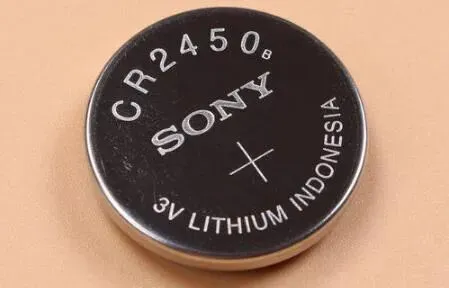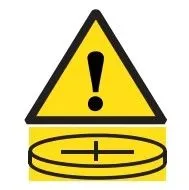
Button Battery ANSI/UL 4200A-2023 Standard Test
Background of ANSI/UL 4200a-2023 RegULations:
The Reese's Law (P.L. 117-171) was enacted in the United States in 2022, stipulating federal safety requirements for button batteries or coin cells to eliminate or adequately REDuce the risk of injury to children aged six and under from ingesting button or coin batteries. Reese’s Law Section 2 requires the U.S. Consumer Product Safety Commission (CPSC) to promulgate a rule regarding button batteries or coin cells and consumer products containing such batteries. On September 21, 2023, the CPSC issued 16 cfr part 1263 - Regulations for Button Batteries or Coin Cells and Consumer Products Containing Such Batteries. The final rule adopts the voluntary standard ANSI/ul 4200a-2023 as the mandatory safety standard for button batteries or coin cells and consumer products containing such batteries.

Effective Date of ansi/ul 4200a-2023:
According to Reese’s Law 16 cfr 1263.3, the law will be enforced on March 19, 2024, for consumer products containing button or coin batteries. To confirm compliance with Reese’s Law, general-purpose consumer products must provide a General Certificate of Conformity (GCC). Audio/Video (AV), consumer electronics, and information technology equipment are classified as general-purpose products using button batteries.
Scope of ANSI/UL 4200A-2023:
1. Covers household products containing or possibly using button batteries or coin cells.
2. Applies to consumer products containing button batteries or coin cells. These requirements do not apply to products intended for specialized purposes and instructions that are not meant to be used in areas accessible to children, such as professional or commercial use products in locations where children are not typically present.
3. These requirements are intended to supplement other safety requirements for products containing button batteries or coin cells and do not replace specific requirements included in other safety standards to mitigate the physiological hazards of button or coin cells.
4. Excludes products that specifically use zinc-air battery technology.
5. Excludes toy products that comply with the battery accessibility and labeling requirements of ASTM F963 "Standard Consumer Safety Specification for Toy Safety."

Testing Standards:
ANSI/UL 4200A dated August 30, 2023 "Products Incorporating Button Batteries or Coin Cell Batteries."
Structural Requirements:
- Test with probe 11 of IEC61032, ensuring no contact with the battery.
- The battery compartment must require tools (e.g., screwdriver, coin) to open, or if by hand, at least two independent and simultaneous actions are needed to open the battery compartment cover or door.
- If the battery compartment cover or door is secured by screws or similar fasteners, the fasteners must be fixed to the cover or door.
- Products with “non-user replaceable or removable batteries” must effectively prevent users or children from removing the battery. The product should be designed so that the battery is inaccessible through the casing or similar means, or the battery should be completely fixed by welding, riveting, or similar methods.






Performance Requirements:
- Pre-treatment in an oven
- Torque test
- Open/close and remove/install battery/screws 10 times
- Pull test
- Drop test
- Compression test
- Impact test
- Probe test
- Squeeze test
- Stability test
- Durability of markings
Number of Test Samples for ANSI/UL 4200A-2023:
2pcs of the whole unit.
Email:hello@jjrlab.com
Write your message here and send it to us
 Canadian Rug Flammability Testing
Canadian Rug Flammability Testing
 Toy Flammability Test Compliance Certification
Toy Flammability Test Compliance Certification
 ISO 17025 Accredited Test Laboratory
ISO 17025 Accredited Test Laboratory
 What is Amazon California Proposition 65?
What is Amazon California Proposition 65?
 New METI Registration Regulations in Japan
New METI Registration Regulations in Japan
 Attention for Amazon Japan Sellers: New PSE Regula
Attention for Amazon Japan Sellers: New PSE Regula
 Compliance with Japanese Representative & METI
Compliance with Japanese Representative & METI
 ZigBee-LoRa-Z-Wave Product compliance testing
ZigBee-LoRa-Z-Wave Product compliance testing
Leave us a message
24-hour online customer service at any time to respond, so that you worry!




